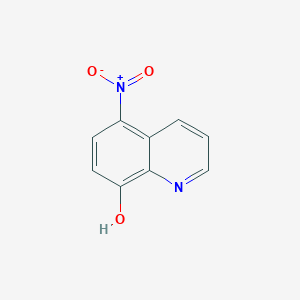-
Categories
-
Pharmaceutical Intermediates
-
Active Pharmaceutical Ingredients
-
Food Additives
- Industrial Coatings
- Agrochemicals
- Dyes and Pigments
- Surfactant
- Flavors and Fragrances
- Chemical Reagents
- Catalyst and Auxiliary
- Natural Products
- Inorganic Chemistry
-
Organic Chemistry
-
Biochemical Engineering
- Analytical Chemistry
- Cosmetic Ingredient
-
Pharmaceutical Intermediates
Promotion
ECHEMI Mall
Wholesale
Weekly Price
Exhibition
News
-
Trade Service
Pharmaceutical Network Market Analysis: Merck recently announced that it will work with AMCM, a unit of the EOS Group, to develop and produce 3D-printed tablets for clinical trials and then commercial production
It is reported that Merck's goal is to use powder bed fusion technology to develop drugs, in which the laser will melt the powder layer by layer and fuse togetherAm is expected to make tablet production faster and cheaper, as reformulation can be avoided throughout drug development and commercial productionIn addition, 3D printing presents the possibility of adapting to the needs of patients
In today's rapid lying, 3D printing drugs are no longer a rare eventDue to the high degree of automation, less production links, low risk of human error, can effectively ensure the safety and quality of products, 3D printing drugs by many pharmaceutical companies optimistic and concern
In 2015, Aprecia Pharmaceutical produced a pill made through 3D printing technology and obtained FDA approval
In 2017, GlaxoSmithKline used inkjet 3D printing and ultraviolet (UV) curing technology to create tablets to treat Parkinson's disease
In 2018, a team led by George Washington University (GWU) developed a microcapsule, Biocage, in 3D printing, which has been shown in mouse experiments to deliver drugs that could help doctors create new treatments for diseases, especially rare diseases
Rhode Island start-up Vitae Indutrie has also developed a new 3D printer called AutoCompounder that can print custom drugs in 10 minutesIt is reported that the printer's time-consuming time is only 1/3 of the traditional artificial filling method, greatly simplifying the pharmaceutical process
In 2019, FabRx announced that it was using 3D printing technology to tailor exclusive medicines for children suffering from "maple glycuria." It is reported that maple glycuria is a rare genetic metabolic disorder, treatment programs usually need to be tailored to the patient's personal situation, the time spentThe use of 3D printing technology can greatly shorten the doctor's working time, quickly create these unique pills donot, taste and shape, not only can effectively manage the disease, but also make children more willing to accept the drug
In our country, 3D printing drugs have actually appearedShaanxi has announced seven 3D printing achievements in 2017, one of which is about 3D printing drugsIt is reported that a diameter of only 21 mm tablets, put in the mouth in just three or four seconds to quickly collapse, this is specifically for specific groups of 3D tablets
In August 2015, the FDA approved the first 3D-printed fast-track tablet, which went on sale in 2016, the project's official son said "The 3D-printed tablets, which have rich holes inside the inside and are positively high on the inner surface and can be quickly melted by a small amount of water in a short period of time, will solve swallowing problems for some patients with swallowing disorders "They want to be "3D tablet providers for specific groups of people" and develop high-load, rapid-crash, and easy-to-take 3D drugs in first aid, the elderly, children, and pregnant women
It can be said that 3D printing technology in the transformation of the pharmaceutical industry is being improved, as a new printing method, the future 3D printing or will bring about changes in the pharmaceutical industry, the development potential to be tapped At the same time, traditional pharmacies will be digitally transformed through a variety of channels, such as using 3D printers, telemedicine, and modifying patients' drug treatment programs
Industry insiders say that, at present, although 3D printing technology in the field of medicine is developing rapidly, there are many things to be resolved Commercial 3D printers, for example, need to meet the hygiene requirements of pharmaceutical preparations and comply with regulatory requirements It is reported that the use of 3D printing technology to prepare the drug - SPRITAM (left e-Acetine) has been listed, but there are still some technical and regulatory problems to be resolved.







